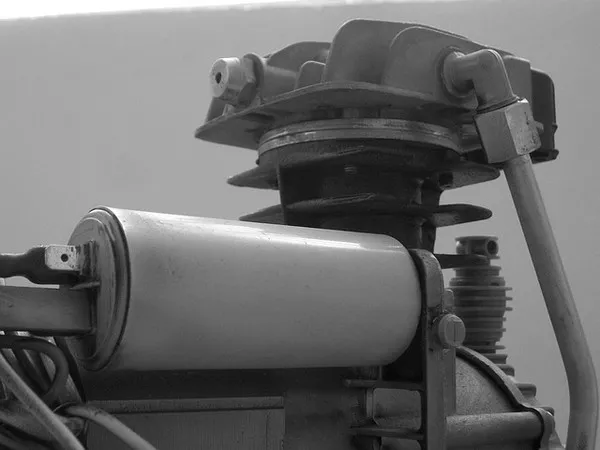Air tools have become indispensable in various industries and workshops due to their efficiency and versatility. However, to make the most out of these tools, selecting the right compressor is crucial. A compressor acts as the powerhouse, supplying compressed air to pneumatic tools. With a plethora of options available in the market, finding the best compressor for air tools can be daunting. This article aims to simplify this process by highlighting key considerations and recommending top choices.
Understanding Your Air Tool Requirements
Before delving into the realm of compressors, it’s essential to understand the specific requirements of your air tools. Consider factors such as:
1. Air Pressure Needs
Different air tools require varying levels of pressure to operate optimally. For instance, pneumatic nailers typically operate at lower pressures (around 70-120 PSI), while sanders and grinders may need higher pressures (90-150 PSI). Check the tool’s specifications to determine its air pressure requirements.
Example:
- Pneumatic Nailer: 70-120 PSI
- Sander/Grinder: 90-150 PSI
2. Air Volume Requirements
Air volume, typically measured in cubic feet per minute (CFM), is another crucial factor. Tools with high air consumption, such as sanders and impact wrenches, demand compressors with higher CFM ratings. Ensure the compressor can meet or exceed the CFM requirements of your most demanding tool.
Example:
- Impact Wrench: 4-7 CFM
- Sander: 8-12 CFM
3. Duty Cycle
Consider the duty cycle of both the compressor and the air tools. Duty cycle refers to the percentage of time a compressor can operate within a given time frame. Continuous or high-duty cycle compressors are suitable for industrial settings where tools are used extensively, while intermittent duty compressors are more common for light-duty applications.
4. Portability and Size
Evaluate whether portability is essential for your workspace. Larger compressors typically offer higher CFM ratings and storage capacities but may be less portable. Smaller, portable compressors are ideal for on-the-go applications but may sacrifice performance.
Types of Air Compressors
Understanding the different types of air compressors is crucial in selecting the best one for your needs. The most common types include:
1. Reciprocating (Piston) Compressors
Reciprocating compressors use pistons to compress air. They are available in both single-stage and two-stage configurations. Single-stage compressors are suitable for small workshops and light-duty applications, while two-stage compressors offer higher pressure and are ideal for continuous use in industrial settings.
Pros:
- Cost-effective
- Suitable for intermittent use
- Available in various sizes and configurations
Cons:
- Noisy operation
- Requires regular maintenance
2. Rotary Screw Compressors
Rotary screw compressors utilize two intermeshing helical rotors to compress air. They offer continuous operation and are highly efficient, making them ideal for industrial applications requiring a constant supply of compressed air.
Pros:
- High efficiency
- Continuous operation
- Low noise levels
Cons:
- Higher initial cost
- Requires specialized maintenance
3. Centrifugal Compressors
Centrifugal compressors use centrifugal force to accelerate and compress air. They are typically used in large industrial applications where high volumes of compressed air are required.
Pros:
- Suitable for high-volume applications
- Energy-efficient
- Low maintenance
Cons:
- Higher initial cost
- Limited pressure capabilities
4. Portable Compressors
Portable compressors are compact and designed for on-the-go applications. They are often reciprocating compressors and are suitable for small workshops, DIY projects, and construction sites.
Pros:
- Portability
- Versatility
- Ideal for remote work locations
Cons:
- Limited power and capacity
- Not suitable for continuous use
- Selecting the Best Compressor for Your Air Tools
Once you’ve assessed your air tool requirements and familiarized yourself with the types of compressors available, consider the following factors to make an informed decision:
1. CFM Rating
Choose a compressor with a CFM rating that meets or exceeds the requirements of your most demanding air tool. Ensure the compressor can maintain adequate pressure and volume for continuous operation.
2. Tank Size
The size of the compressor’s air tank affects its performance and duty cycle. Larger tanks provide a more consistent air supply and reduce the frequency of motor cycling. However, consider the space constraints of your workspace when selecting tank size.
3. Power Source
Compressors are available in electric, gasoline, and diesel-powered options. Electric compressors are suitable for indoor use and offer consistent power, while gasoline and diesel-powered compressors are ideal for outdoor and remote applications but may produce fumes and require more maintenance.
4. Noise Levels
Consider the noise levels of the compressor, especially if you’re working in a noise-sensitive environment. Rotary screw and centrifugal compressors generally operate quieter than reciprocating compressors.
FAQs
1. What maintenance is required for air compressors?
Air compressors require regular maintenance to ensure optimal performance and longevity. This includes checking and replacing air filters, monitoring oil levels (for oil-lubricated compressors), inspecting belts and hoses for wear, and draining moisture from the tank regularly.
2. Can I use multiple air tools simultaneously with one compressor?
The ability to run multiple air tools simultaneously depends on the compressor’s CFM rating and the combined air requirements of the tools. Ensure the compressor can supply enough air volume to meet the demands of all connected tools.
3. How do I determine the ideal compressor size for my workshop?
Calculate the total CFM requirements of all your air tools running simultaneously, then choose a compressor with a CFM rating slightly higher than this value to ensure adequate airflow. Consider factors such as duty cycle, tank size, and available power sources when selecting the compressor size.
See Also What Is A Central Air Compressor? A Comprehensive Guide
Conclusion
Choosing the best compressor for air tools involves understanding your tool requirements, evaluating different compressor types, and considering factors such as CFM rating, tank size, power source, and noise levels. By carefully assessing these factors and addressing common concerns, you can select a compressor that meets your needs and enhances the efficiency of your air tool operations.

